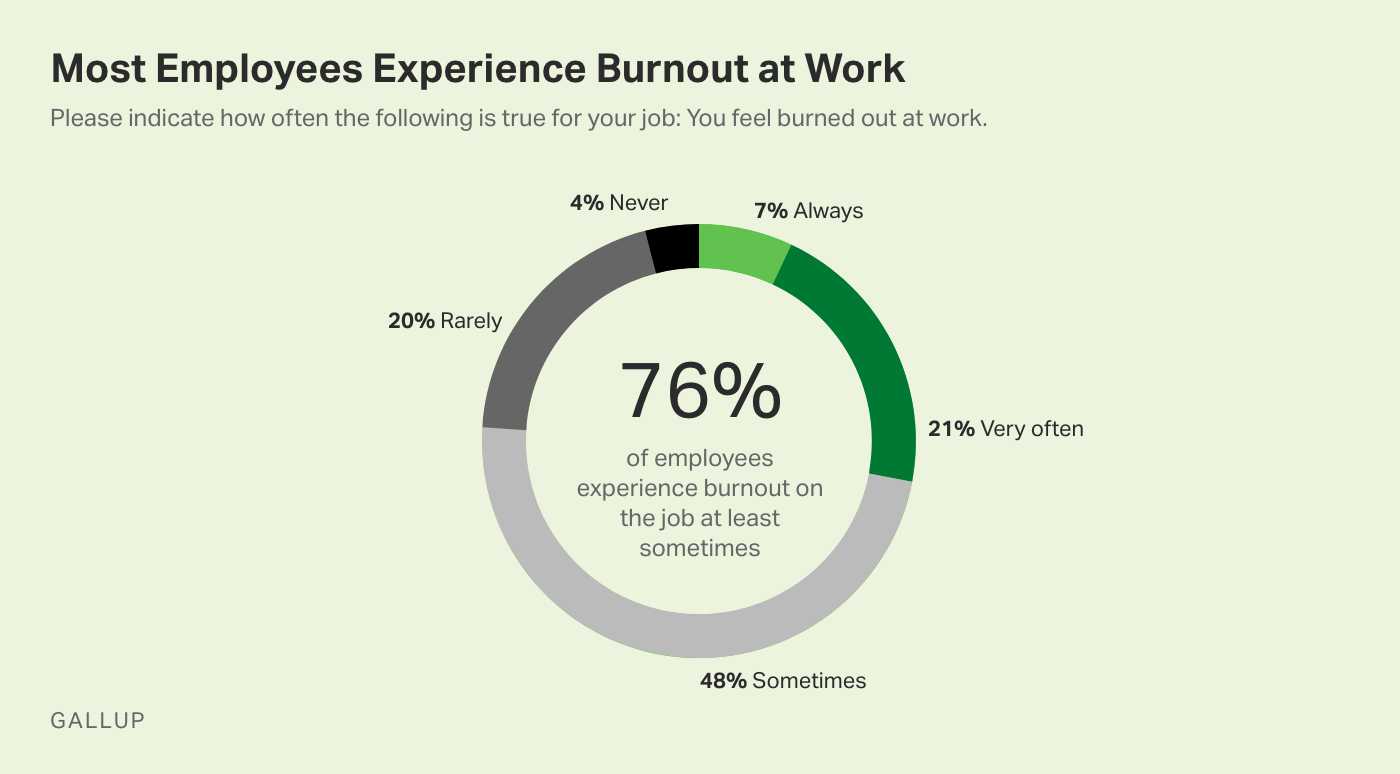Story Highlights
- 76% of employees experience burnout at least sometimes
- It's a common myth that simply reducing hours will solve employee burnout
- Learn the real causes of burnout and what your company can do
Do you know what really causes job burnout? It's not just overtime.
According to Gallup's recent report, Employee Burnout: Causes and Cures, 76% of employees experience burnout on the job at least sometimes, and 28% say they are burned out "very often" or "always" at work.

The consequences are real: Our analysis shows that employees who frequently experience work burnout are 63% more likely to take a sick day and 23% more likely to visit the emergency room.
It is often assumed that occupational burnout is caused solely by over-work. The common wisdom is to recover from burnout by working fewer hours. Take a vacation, take a day off, or even burn a sick day, just to survive.
Here's the reality: Gallup's employee burnout statistics show that the number of hours people work each week does matter, with burnout risk increasing significantly when employees exceed 50 hours and climbing even higher after 60 hours. But how people experience their workload has a stronger influence on burnout than hours worked.
In fact, engaged employees who have job flexibility tend to work more hours per week than the average employee, while reporting higher wellbeing. When people feel inspired, motivated and supported in their work, they do more work -- and that work is significantly less stressful on their overall health and wellbeing.
In other words, it's not just the number of hours you work; it's how you're managed and how you experience work during those hours.
Here are the top five factors that correlate most highly with employee burnout in our study:
- Unfair treatment at work
- Unmanageable workload
- Unclear communication from managers
- Lack of manager support
- Unreasonable time pressure
(To see all 15 factors, download our report.)
When people feel inspired, motivated and supported in their work, they do more work -- and that work is significantly less stressful on their overall health and wellbeing.
The Manager Matters Most
All five of these factors are significantly influenced by manager behavior. Managers have a responsibility to protect against unfair treatment in the workplace, communicate clearly and provide support. In addition, managers should be the advocate and ally of their team members when it comes to prioritization, workload management and setting reasonable expectations with internal partners.
Unfortunately, ineffective managers become the cause of burnout, rather than its cure. They treat employees unfairly, burden employees with impossible expectations and provide little support to help employees achieve them. At the very least, bad managers don't help their employees overcome these paralyzing barriers to a good day at work.
But it's not always the manager's fault. Many organizations don't supply their leaders with the necessary management training and support to be great at their jobs. And this can cause burnout for the managers themselves, creating their own sense of unreasonable expectations and a perceived lack of support. In this way, burnout can easily cascade throughout an entire organizational structure.
Leaders, managers and individual contributors all need an occasional break -- a little time off to recover from an intense week or a particularly rough patch.
But unless you address the root causes, you may be missing critical warning signs. And that "personal day" might give your employee just enough breathing room to realize that it's the workplace that's the problem. Employees who frequently experience burnout are 2.6 times as likely to be actively seeking a new job.
Prevent burnout from spreading around your workplace:
- Download Employee Burnout: Top Causes and Cures.
- Discover the best ways to prevent employee burnout.
- Find out what support your managers need to reduce burnout for their teams.






